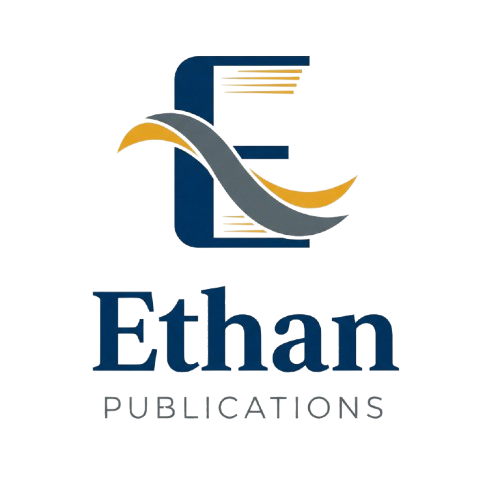REMEDIATING STUDENTS’ MISCONCEPTION AND ACHIEVEMENT IN BASIC SCIENCE VIA SCIENCE WRITING HEURISTICS AND PEER REVIEW INSTRUCTIONAL STRATEGIES IN DELTA STATE
Authors: Emeka Samuel Nwankwo
DOI: 10.5281/zenodo.17250531
Published: October 2025
Abstract
<p><em>The research adopted quasi-experimental design. Treatment groups were formed from intact classes. It had three groups: two experimental and one control. The students in the first experimental group were taught Basic Science using science writing heuristics instructional strategy (SWHIS), while the students in the second experimental group received instruction using peer review instructional strategy (PRIS). The students in the control group received instruction utilizing conventional lecture instructional strategy (LIS). The three groups were pre- and posttested before and after treatment. The study included a population of 174,570 students enrolled in the JSII. The study included a total of 328 SSII Basic Science students from six public coeducational secondary schools in Delta State. The schools were chosen through the implementation of a simple random sampling technique. Two-Tier Basic Science Test (TTBST) was used for data collection in this study. TTBST was used to measure students’ misconception and achievement in Basic Science. Face validity of the TTBST was determined by three specialists. Content validity was determined using a table of specifications. The discriminating and difficulty indices of the instrument were determined to prove construct validity. TTBST reliability was established using Kuder-Richardson 21 since the items are dichotomous, which yielded 0.77 and 0.72, for the achievement and misconception segments respectively. TTBST was administered as pre- and post-test before and after treatment and the scores obtained were analysed using Analysis of Covariance (ANCOVA). The results revealed a significant difference in the mean misconception and achievement scores among students taught Basic Science using science writing heuristics, peer review and lecture instructional strategies, in favour of science writing heuristics and peer review instructional strategy. The study concluded that teaching Basic Science using science writing heuristics and peer review instructional strategies leads to superior academic achievement and a reduction in misconceptions compared to the traditional lecture instructional strategy. Hence, it was recommended among others that educators should incorporate science writing heuristics and peer review instructional strategies into their instructional practices. These strategies encourage students to actively engage in scientific thinking and problem-solving, fostering a deeper understanding of Basic Science. </em></p>
Full Text
No full text available
Cite this Article
References
- Berland, L. K., Schwarz, C. V., Krist, C., Kenyon, L., Lo, A. S., & Reiser, B. J. (2016). Epistemologies in practice: Making scientific practices meaningful for students. Journal of Research in Science Teaching, 53(7), 1082-1112.
- Chen, L., Li, H., & Zhang, W. (2021). An investigation of the effect of science writing heuristics on students’ misconceptions of photosynthesis. Research in Science Education, 1, 1-23.
- Chi, M. T., Wylie, R., & Fukuyama, H. (2018). Strategy discovery as a competitive method for improving student learning. Perspectives on Psychological Science, 13(6), 678-692.
- Cho, B. Y., & Cho, S. H. (2018). Effects of peer feedback on the writing skills of science and engineering students. Asia-Pacific Journal of Science Education, 2(2), 1-16.
- Driver, R., Asoko, H., Leach, J., Loverude, M., & Scott, P. (2018). Constructing scientific knowledge in the classroom. Educational Researcher, 43(3), 118-123.
- Federal Republic of Nigeria. (2013). National Policy on Education. Abuja: Federal Ministry of Education.
- Federal Republic of Nigeria. (2014). Revised 9-Year basic education curriculum. Abuja: Nigerian Educational Research and Development Council.
- Freeman, S., Eddy, S. L., McDonough, M., Smith, M. K., Okoroafor, N., Jordt, H., & Wenderoth, M. P. (2014). Active learning increases student performance in science, engineering, and mathematics. Proceedings of the National Academy of Sciences, 111(23), 8410-8415.
- Hanauer, D.I., Graham, M.J., & Hatfull, G. (2014). A measure of college student persistence in the sciences (PITS). CBE—Life Sciences Education, 13(2), 161-168. doi: 10.1187/cbe.1308-0161.
- Hodson, D. (2019). Science education as a call to action. The Journal of the Learning Sciences, 28(3), 315-324.
- Hussain, A., Pereira, K., & Moran, A. (2016). Developing oral communication skills of science students: An evaluation of video presenting in a face-to-face course. Higher Education Research & Development, 35(3), 532-547.
- Nguyen, T. L., Duong, T. M., Leyva, L. A., & Nguyen, Q. T. (2020). Impact of science writing heuristics instruction on students' achievement and writing competency in chemistry. Education Sciences, 10(6), 152.
- Ogunleye, A. J., Adeleke, E. K., & Ogunleye, O. O. (2015). Students' attitude and performance in basic science in Lagos State. Electronic Journal of Science Education, 19(5), 39-49.
- Osanaiye, J. A. (2017). An evaluation of junior secondary school integrated science and basic science students’ performances in Kogi State, Nigeria. Journal of Emerging Trends in Educational Research and Policy Studies, 8(5), 246-251.
- Smith, J. K., Thompson, S. L., Smith, J. D., & Salinas, I. (2019). Science writing heuristics as a method for assessing student misconceptions: A case study on energy in ecosystems. Journal of Research in Science Teaching, 56(2), 202-228.
- Tai, S.J.D., Liu, C.C., & Chiu, H.K. (2017). The effects of students' peer-assessment activities on their performance and misconception reduction in a web-based learning module. International Journal of Science and Mathematics Education, 15(7), 1247-1266. doi: 10.1007/s10763-015-9654-5.
